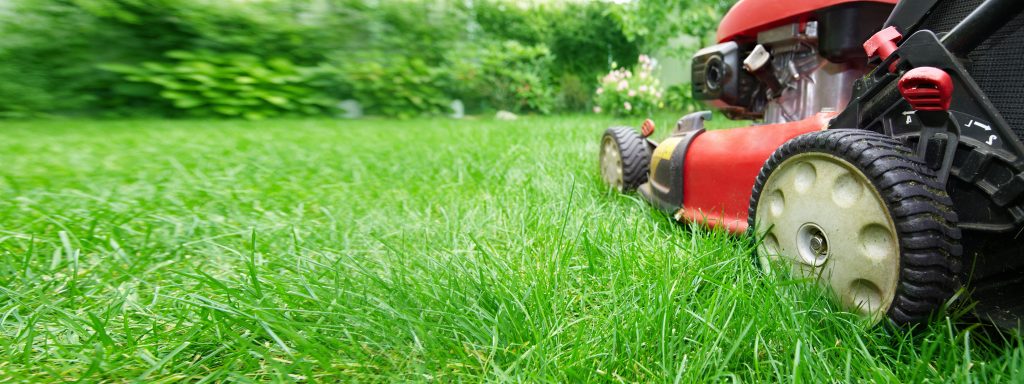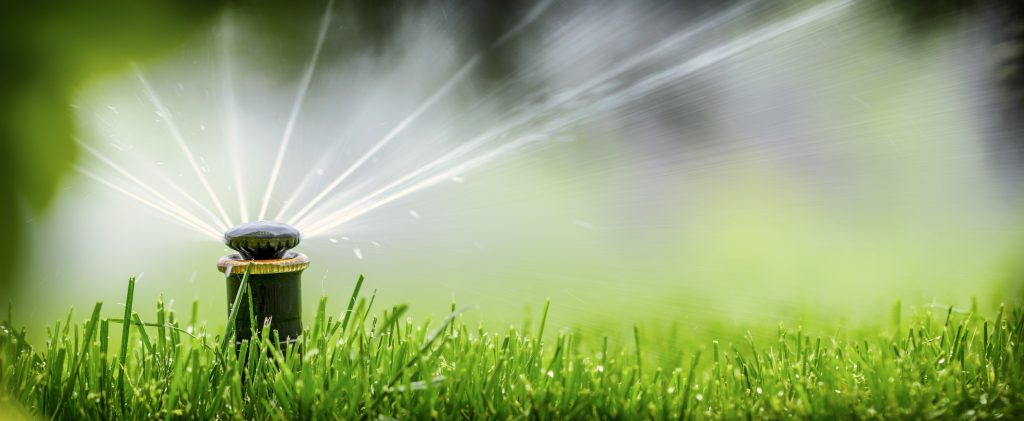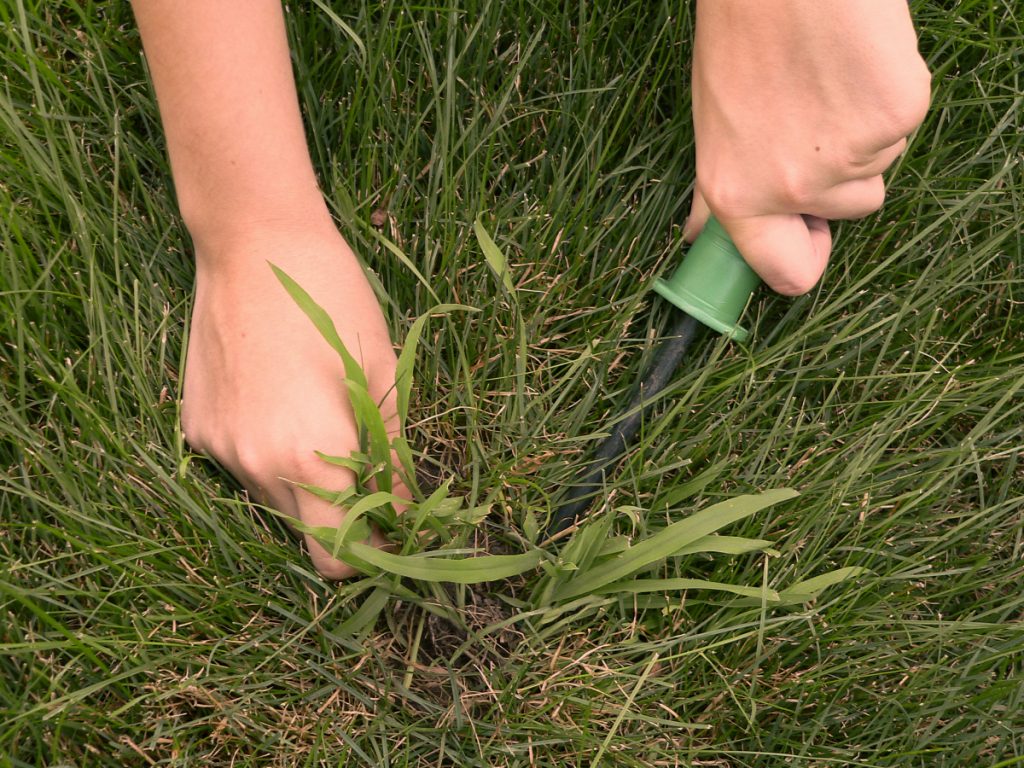Early Spring Preparation:
March might be too early to get a start on your lawn, but it is a great time to get your mower blades sharpened. A dull blade rips and pulls the top of a blade of grass, leaving a jagged edge which can be an opening for turf diseases. It’s also a great time to tune up your mower engine.
Once all snow and is gone and the ground is firm and dry, rake any debris and leaves left on the lawn after the winter. This will break up any matted patches, including those due to snow mold, and raise the grass blades up so that they get optimal sun exposure.
If all the snow has melted early, consider an application of organic fertilizer, such as Milorganite or Espoma Spring Lawn Booster. The dark color of the granules will absorb the sunlight and warm up your lawn and it will wake up from dormancy more quickly. An organic fertilizer will also improve overall soil health by sustaining beneficial microbes in the soil that enable the roots to access vital nutrients.
Check your soil pH. You can send your soil sample here for more extensive testing. Grass grows best in soil with a slightly acidic to neutral pH of 6.2 to 7.0. Weeds thrive in an acidic and alkaline environment. Most soils in New England tend to be acidic. Most likely, you will need to raise the pH of your soil and either of these will work well:
- Pelletized Lime
- Mag-I-Cal by Jonathan Green

Grass Growing Season
A healthy soil will develop a healthy turf grass
The most fundamental factor in growing a beautiful lawn is healthy soil. A healthy soil has beneficial microbes which allow fertilizer to last longer and hold on to moisture longer. This promotes deep root growth which will enable the turf to withstand drier periods.
Basic lawn care consists of fertilization, watering, mowing and pest control. Other components of lawn care can include topdressing, overseeding, aeration and dethatching. Every lawn is unique, and every homeowner must determine how best to care for their own lawn.
Fertilizing:
Both organic and synthetic lawn fertilizers are widely available. Some fertilizer products are also combined with either weed preventers, weed killers, or insect killers. Many lawn care product companies promote a 4-step system, but the choice of fertilizer is a personal decision, and many homeowners will mix and match organic and synthetic fertilizers depending on their needs or preferences. Feel free to consult with a Weston Nurseries lawn care professional to find the right product for your particular needs.
- Given the right weather conditions, an early March application of organic fertilizer can help wake up a lawn quickly (see above) and improve soil health, setting the foundation for a healthy lawn.
- Generally, a first application of fertilizer is applied roughly between April 15 and June 1. You may want to consider “a first application” product, which is typically a fertilizer with crabgrass preventer. If you want to use a synthetic product, we recommend Jonathan Green or GreenView crabgrass preventer plus fertilizer. If you would prefer an organic product, Espoma has a corn gluten crabgrass preventer. Be aware that most synthetic products with crabgrass preventer cannot be used when seeding a lawn; however, we do have an alternative crabgrass preventer with fertilizer that can be used when seeding.
- Another round of fertilizer may be appropriate in late spring or early summer and will prepare your lawn for summer by allowing grass to build up its energy reserves. Choose an organic fertilizer or a “weed and feed’ product with a broadleaf herbicide, designed to kill weeds such as dandelions and clover while fertilizing your existing lawn.
- In the summer, watering, mowing and pest management should be the main focus for your lawn. We do not advise fertilizing during the height of summer with a synthetic fertilizer, however you can fertilize in the summer with organic products like Espoma and Milorganite. Additionally, an application of Jonathan Green Love your Soil helps the turf grass during the stress of the summer.
- Another fertilizer application is appropriate in early fall, when the turf still has several weeks of active growth before dormancy. Fall fertilizers have high amounts of potassium which is a key element to help turf grass tolerate the stress of the upcoming winter. This application is very important and should not be over looked as it will help build robust root systems going into winter and will provide the energy to restart growth come spring. This is a great opportunity to use an organic fertilizer that will enrich your soil by supporting healthy microbes that release micronutrients to the plants over time.
Mowing:
- Begin mowing once grass has greened up and started growing.
- Do not mow wet grass as this may introduce disease.
- Mow weekly, 2½-3” high. Don’t cut off more than 1/3 of the blade at any single mowing. Leave clippings (a good nitrogen source) if no disease is present and they won’t smother the grass.
- Raise mower setting to 3-4” when weather consistently warmer, by late June. If you mow too short and your stubble-lawn will burn at the roots, and grass that is allowed to grow too long will invite disease and grow less vigorously.
- Lower mower again to 2 ½-3” when weather is consistently cooler in the fall.
Watering:
- Your lawn’s water requirements depend on the soil texture. Is your soil sandy, silty, or clay? A very sandy soil will not retain water whereas a soil heavy in clay will hold on to it for a long period of time and not allow a healthy root system development.
- Water deeply and infrequently, but still regularly. Grass requires about 1 – 1.5’ of water per week, whether through rainfall or irrigation. Daily irrigation prevents deep root development, while infrequent deep irrigation will encourage a deeper root system, preventing the grass from drying out as quickly during dry periods.
- If you are unable to water regularly during dry periods, your lawn may cope by going into dormancy until more water is available; however, extended periods of drought can cause dieback. Try to maintain a minimum of a once per week watering schedule.
- Early morning best time to water, never during mid-day due to evaporation.
- Hydretain is a product that you may want to consider applying to your lawn to reduce irrigation requirements. It acts like a “tiny water magnet”, forming microscopic droplets within the root zone. As a result, the roots are able to utilize soil moisture which would otherwise be lost to evaporation.

Problems:
Weeds: Early in the growing season can be one of the best opportunities to get the upper hand against pests and weeds in your garden.
- Crabgrass: An annual that dies every fall but leaves a huge legacy of seed ready to germinate the next spring. The best process for control is to use a pre-emergent product and, if further control is necessary, a liquid spot treatment later in the season. Post-emergent controls are best applied on juvenile crabgrass, generally between June 1 and July 31. Pre-emergent control is always preferred and much less stressful to turf. If you are planning on overseeding in the spring to give your turf an extra boost, it could require some careful planning in your use of pre-emergent and post-emergent products for weed control.
- Broadleaf Weed Controls: Available as a granular or liquid product for use as a spot or entire lawn weed control and also readily available as a component of weed and feed combination products. It is important to remember these products only kill weeds that you can see, and do not prevent new weed growth. There is little sense in treating the entire lawn with a weed and feed product if you have only a few broadleaf weeds. In that case, a spot treatment will work well. Please note that if you want to re-seed you need to wait at least 4 to 6 weeks after a weed killer product is applied.

Grubs: Beetle eggs hatch into relatively small grubs that feed on the roots of turf grass until soil temperatures drop in the fall. The grubs go deeper in the soil to overwinter and resurface the next spring (when soil temperatures rise once again) as much larger grubs. If you find more than 5-7 grubs in a square foot of turf you should treat the lawn. If you do not find grubs or find only a few there is little point in using a chemical product as a healthy lawn can tolerate this low level. There are two basic types of chemical control, 24-hour insecticides (typically Dylox) and season-long insecticides (typically imidacloprid). The 24-hour products are effective on both large and small grubs. Season-long controls are more effective on small grubs. The best time to apply season long products is when the adult beetles are flying, in June and July. Grub control is typically available as a granular product. Organic controls are available such as milky spore and beneficial nematodes. We recommend you research the specific application requirements of these options.
Surface feeding insects: Most common in this area are ants, sod webworm and chinch bug. Do not treat if there is no sign of insect damage; needless use of chemicals promotes resistance. Insecticides for surface feeders are available in granular and liquid form. Identification of the specific insect is key to effective treatment. Once you’ve identified the insect culprit, you can use any insecticide that lists that insect on its label. Midsummer lawns that are stressed and may show more signs indicative of surface eating insects. In order to eliminate unneeded insecticide use, it is important to distinguish between insect damage and summer dormancy. Ask a Weston Nurseries lawncare professional for advice.
Moss: Commonly occurs when the soil is compact or has poor drainage. Improving aeration will create an environment where moss does not thrive. Apply Bonide MossMax to kill the moss and then change the soil texture by adding sand, organic soil amendments, or JG Love your Soil over the next year or two, and that will prevent moss from redeveloping.
Turf diseases: Preventative applications should be made on lawns with disease history when conditions are prime for disease outbreak. Snow mold and red thread typically resolve with spring raking and fertilization. Identification of the specific disease is key to effective treatment. Pythium blight, leaf spot, brown patch, or rust can from time to time become a problem. Once you’ve identified the problem you can use any fungicide product that lists that problem on its label. Do not leave diseased clippings on the lawn. Consult with one of our lawn care professionals for advice.
Mushrooms: Usually an indicator of overwatering. They often appear after periods of rainy weather and develop from thatch, buried wood, dead roots, and stumps. The fungi that produce these mushrooms are beneficial because they decompose dead plant material on and in the soil, making nutrients available to growing plants. These mushrooms usually are harmless to grasses, but some people consider them unsightly or want to get rid of them because young children play in the area. Applications of fungicides are not effective in controlling these mushrooms. A simple way to remove mushrooms is to mow the lawn and collect the clippings. In some cases, elimination of excess thatch and aerating the soil to improve water penetration also helps reduce their numbers. If the weather becomes drier, the mushrooms gradually disappear without interventions.
Moles and Voles: Moles eat worms and insects, and they create tunnels which lead to air pockets under your lawn. Rolling or compacting those affected areas is suggested to collapse tunnels. Voles create trails on the surface of the lawn. Rake affected areas and overseed. To prevent future attacks, apply Bonide MoleMax granules to your lawn so that the critters move elsewhere.
Turf Renovation:
Whether you have some bare spots on your lawn or you feel that your entire lawn is underperforming, you may want to overseed. This means sowing grass seed over existing grass to make your lawn thicker and lusher. Although ideally done in fall, it can also be done in spring. Since your new grass seed will be competing with the existing grass, there are a number of steps to take prior to spreading seed. Ultimately, you want to make sure the seed is in contact with the soil, rather than resting on the surface of the grass and that the soil is as conducive as possible to growing new seed.
- Mow existing lawn slightly shorter than normal and bag or rake up clippings.
- Address compaction problem by core aeration or dethatching; it will improve water and nutrient infiltration, improve soil oxygen levels, and reduce thatch levels. A good raking will remove some thatch, but core aeration is best accomplished with a core aerator. You may have to hire a professional service or rent a machine.
- Top-dressing is the next step after dethatching or core aeration. Top-dressings are perfect when your lawn has compaction issues, low fertility and/or moss growing. Top-dressing materials should be raked in after application for best results. Top-dressing can greatly improve soil chemistry and structure, improve fertilizer performance, and provide a longer lasting, natural and beneficial “aeration” of the soil, allowing nutrients and air to reach roots. Some suggested products are:
- Jonathan Green Mag-I-Cal
- Jonathan Green Love Your Soil
- Espoma Spring Lawn Booster
- Espoma All Seasons Lawn Food
- Milorganite
- Coast of Maine Bumper Crop Soil Builder or Weston’s Best Compost are great top dressing for situations where large areas need to be overseeded.
- Over seed to upgrade turf grass varieties in your lawn. Most lawns have too much Perennial Ryegrass and are susceptible to poor fertility, disease pressure and stress. You can change these conditions by over seeding with newer improved varieties of Kentucky Bluegrasses, Fine Leaf Fescues, NEW generation Perennial Ryegrass, Dwarf Type Tall Fescues (Black Beauty), and heat tolerant Texas Bluegrass. Consult one of our experts concerning which blend would be best for your area.
- Spread the seed after aeration or dethatching is done and any top-dressing materials have been applied and raked in – this method will provide a seedbed for your plants while allowing general use and maintenance of the lawn to continue uninterrupted. For large areas, use a spreader or rent a seed-slicer.
- Basic maintenance after overseeding:
- Adequate water is the most important requirement to establish your turf renovation. The soil should be kept evenly moist, which might mean multiple waterings per day for several weeks, depending on rainfall and temperature.
- Continue to mow existing lawn as new seeds germinate and grow but avoid excessive traffic.






